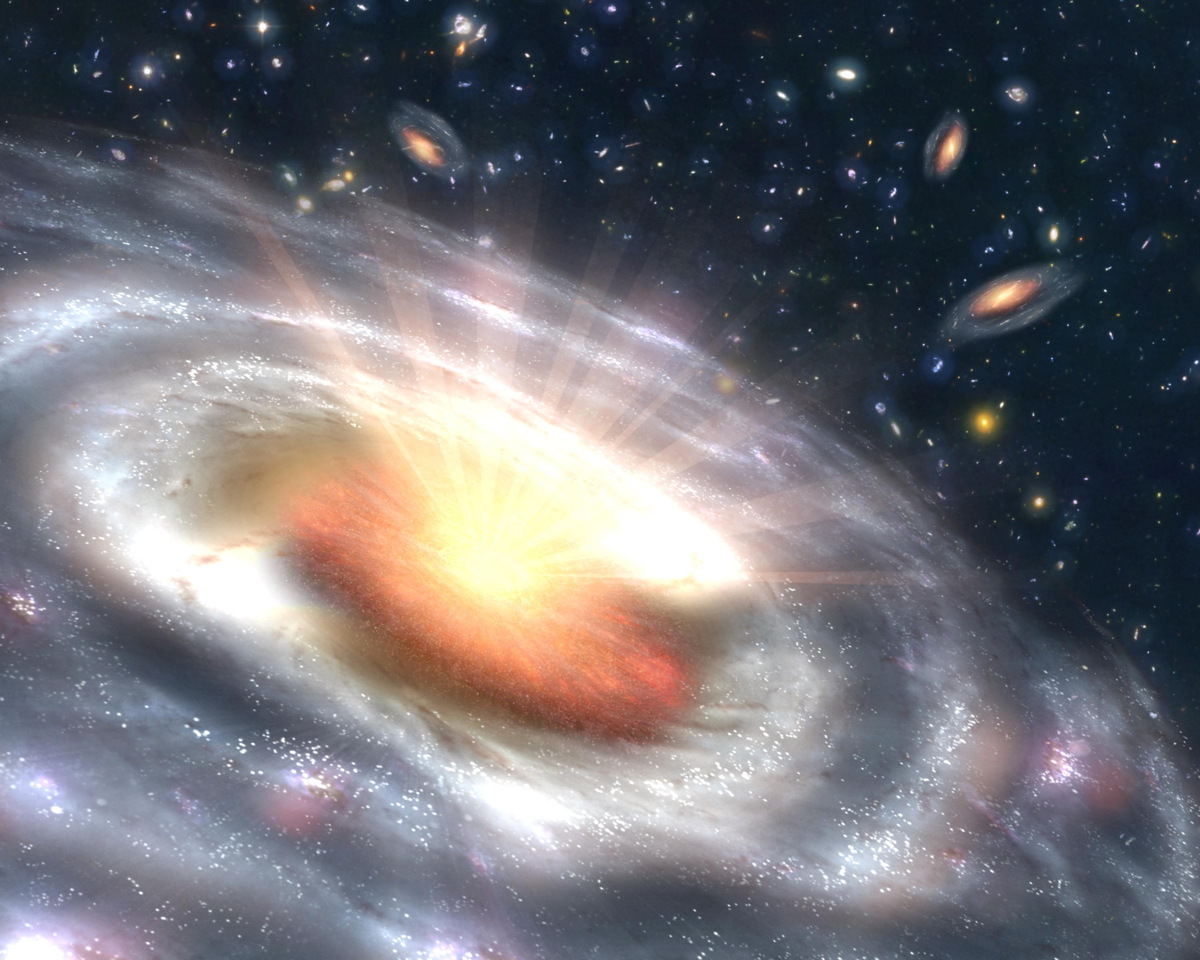20-Year Mystery of the Universe's Brightest Objects Solved

Quasars are the brightest objects in the universe, and display a mysterious diversity in their appearance that has puzzled astronomers for more than two decades.
Now, scientists find this mystery can be solved by looking at two simple features of quasars — how quickly matter is getting fed into the quasars and the direction from which the quasars are seen.
Quasars are supermassive black holes up to billions of times the mass of the sun that live at the hearts of distant, massive galaxies. They release extraordinarily large amounts of light as they rip apart stars and gobble matter.
Past studies of quasars have found that the physical properties of the objects follow definite, regular trends — for instance, a quasar's size is linked with its mass. However, despite such trends, for some puzzling reason, quasars can vary greatly in appearance in visible and ultraviolet light. [The 10 Strangest Things in Space]
To help solve this mystery, scientists examined the largest sample of quasar observations yet — data from more than 20,000 quasars captured by the Sloan Digital Sky Survey. The collaboration's statistical analyses revealed that the appearance of quasars could mostly be explained by two basic factors.
"Our work solves a two-decade-long mystery in quasar research," lead study author Yue Shen, an astronomer at the Carnegie Observatories in Pasadena, Calif.,told Space.com.
The first factor is the so-called Eddington ratio — the luminosity of a quasar compared with its mass. This ratio predicts how quickly matter is falling into a quasar, and was long suspected to play a major role in why quasars often varied in appearance.
Get the Space.com Newsletter
Breaking space news, the latest updates on rocket launches, skywatching events and more!
The other factor is the direction from which astronomers look at a quasar, which influences how much they can see of the clouds of gas closest to the black hole. This fast-moving gas produces a broad range of wavelengths of light, greatly affecting a quasar's appearance, and these findings suggest that these clouds are arranged in a flattened disk, explaining why the direction from which they are seen can matter so much.
"Our findings have profound implications for quasar research," Shen said in a statement. "This simple unification scheme presents a pathway to better understand how supermassive black holes accrete matter and interplay with their environments."
In addition, these findings will help improve future measurements of black hole masses, which in turn will help scientists better understand "the cosmic growth of supermassive black holes and their place in galaxy formation," study co-author Luis Ho at the Kavli Institute for Astronomy and Astrophysics at Peking University said in a statement.
Shen also noted there are several ongoing quasar surveys that will provide even more data "to expand the unification scheme established here." For example, this future data will help yield insights on smaller black holes, "which are fainter, and were missed in earlier surveys," he said.
The research is detailed in the Sept. 11 edition of the journal Nature.
You can follow Charles Choi on Twitter @cqchoi. Follow us @Spacedotcom, Facebook and Google+. Original article on Space.com.
Join our Space Forums to keep talking space on the latest missions, night sky and more! And if you have a news tip, correction or comment, let us know at: community@space.com.

Charles Q. Choi is a contributing writer for Space.com and Live Science. He covers all things human origins and astronomy as well as physics, animals and general science topics. Charles has a Master of Arts degree from the University of Missouri-Columbia, School of Journalism and a Bachelor of Arts degree from the University of South Florida. Charles has visited every continent on Earth, drinking rancid yak butter tea in Lhasa, snorkeling with sea lions in the Galapagos and even climbing an iceberg in Antarctica. Visit him at http://www.sciwriter.us
Most Popular
